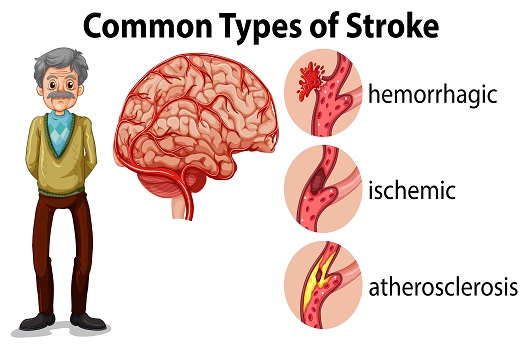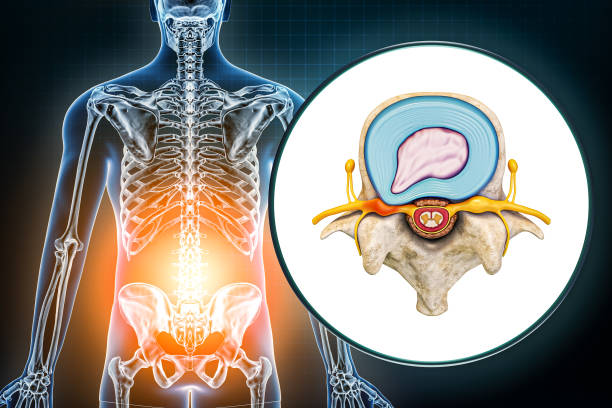
Stroke
Introduction
A stroke, also known as a cerebrovascular accident (CVA), occurs when the blood supply to a part of the brain is interrupted or reduced, preventing brain tissue from getting oxygen and nutrients. Brain cells begin to die in minutes. There are three main types of strokes:
- 1. Ischemic Stroke: This is the most common type, accounting for about 87% of all strokes. It occurs when a blood clot blocks or narrows an artery leading to the brain. The clot often forms in arteries damaged by the buildup of plaques (atherosclerosis).
- 2. Hemorrhagic Stroke: This type occurs when a blood vessel in the brain bursts, leading to bleeding (hemorrhage) in or around the brain. Causes include high blood pressure, aneurysms, arteriovenous malformations (AVMs), or head injury.
- 3. Transient Ischemic Attack (TIA): Also known as a mini-stroke, a TIA occurs when blood flow to the brain is temporarily blocked. The symptoms are similar to those of a full-blown stroke but typically last only a few minutes to a few hours and do not cause permanent damage. TIAs are a warning sign that a stroke may happen in the future.
Symptoms of Stroke
- Sudden numbness or weakness in the face, arm, or leg, especially on one side of the body.
- Sudden confusion, trouble speaking, or understanding speech.
- Sudden trouble seeing in one or both eyes.
- Sudden trouble walking, dizziness, loss of balance, or lack of coordination.
- Sudden severe headache with no known cause.
F.A.S.T. Acronym
Recognize the signs of a stroke using the F.A.S.T. acronym:
- Face drooping: Does one side of the face droop or is it numb?
- Arm weakness: Is one arm weak or numb?
- Speech difficulty: Is speech slurred or hard to understand?
- Time to call 911: If someone shows any of these symptoms, even if they go away, call emergency services immediately.
Risk Factors
- High blood pressure
- Diabetes
- Heart disease
- Smoking
- Obesity
- High cholesterol
- Sedentary lifestyle
- Excessive alcohol consumption
- Age (risk increases with age)
- Family history of stroke
Prevention
- Control high blood pressure and diabetes.
- Maintain a healthy diet and weight.
- Exercise regularly.
- Avoid smoking.
- Limit alcohol consumption.
- Manage cholesterol levels.
- Take medications as prescribed to treat health conditions.

Treatment
Treatment depends on the type of stroke:
- Ischemic stroke: Clot-busting drugs, anticoagulants, and procedures to remove clots or open blocked arteries.
- Hemorrhagic stroke: Measures to control bleeding, reduce pressure in the brain, and surgical interventions if necessary.
- Post-stroke care: Rehabilitation including physical therapy, occupational therapy, speech therapy, and support for emotional and psychological well-being.
- Poor posture or spinal alignment, which can place undue stress on the lower back and increase the risk of disc injury.
Physiotherapy
Physiotherapy is vital in stroke rehabilitation, focusing on restoring movement, strength, and functional abilities. Through tailored exercises, balance training, gait training, and functional activities, physiotherapists help patients regain independence and prevent complications like muscle stiffness and joint contractures. Early intervention and individualized treatment plans are crucial for optimal recovery, often involving techniques like manual therapy, assistive devices, and electrical stimulation. This comprehensive approach, integrated with other therapies, aims to enhance mobility and quality of life for stroke survivors.





